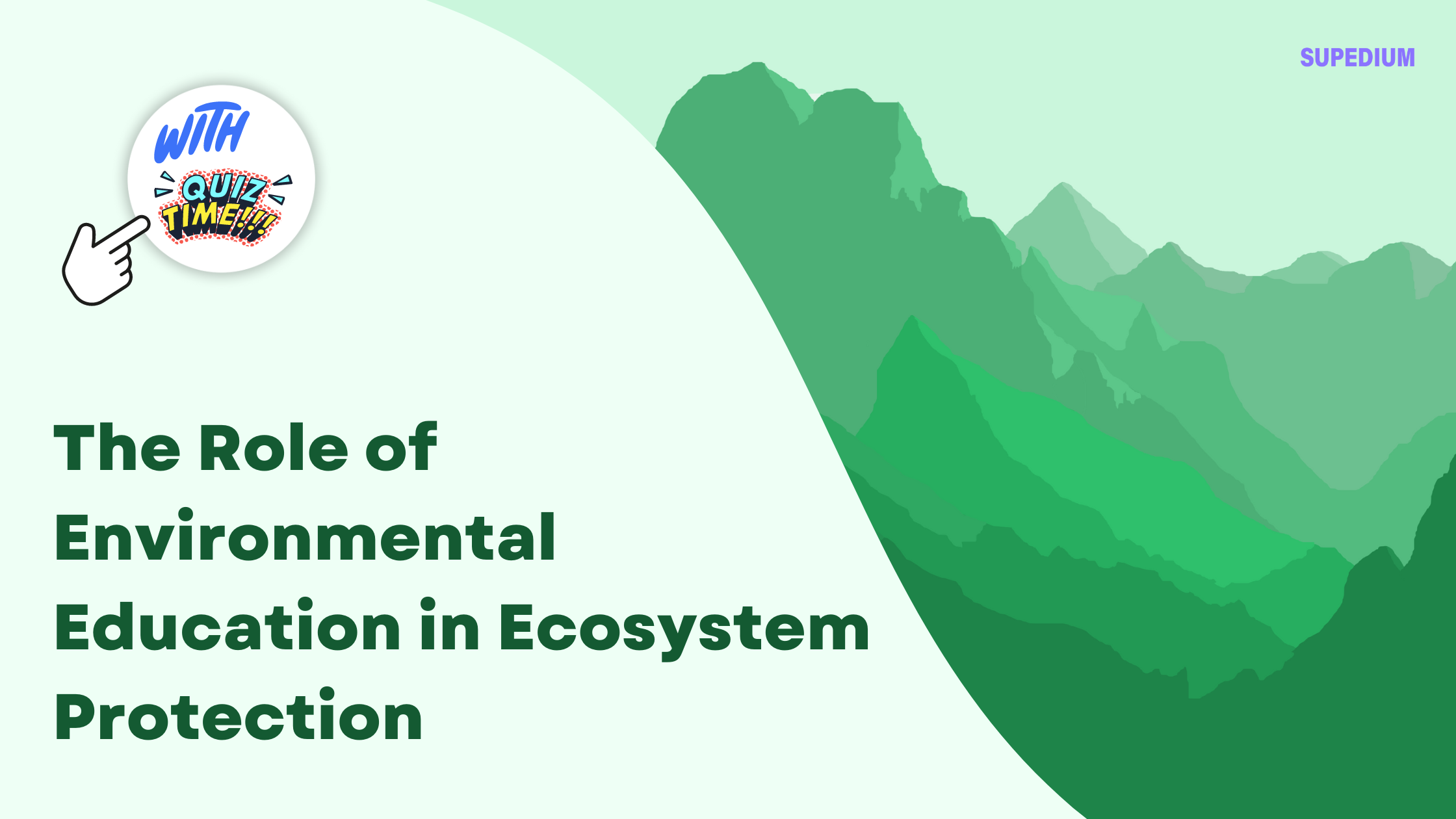Table of Contents
![]()
Introduction
Environmental Education (EE) is a field dedicated to increasing awareness and knowledge about the environment and fostering the skills needed to address environmental challenges. Originating in the late 1960s, EE has evolved significantly, driven by growing concerns about pollution, climate change, and biodiversity loss. Its core aim is to educate individuals and communities about the environment and empower them to make informed decisions that support ecosystem protection.
The Role of Environmental Education
Raising Awareness
One of the primary roles of environmental education is to raise awareness about ecosystem functions and services. Ecosystems, such as forests, wetlands, and oceans, provide essential services including clean air and water, climate regulation, and habitat for wildlife. Understanding these functions helps individuals appreciate the value of ecosystems and recognize the consequences of human activities on these systems. Successful awareness campaigns, such as those promoting tree planting or reducing plastic use, demonstrate the impact of informed public engagement.
Developing Environmental Literacy
Environmental literacy encompasses the knowledge, skills, and attitudes necessary to understand and address environmental issues. Effective EE programs integrate environmental concepts into school curricula, often through interdisciplinary approaches that combine science, social studies, and health education. Informal learning environments, such as nature centers and community workshops, also play a crucial role. By building environmental literacy, EE helps students and community members develop the critical thinking skills needed to make sustainable choices.
Encouraging Sustainable Practices
Environmental education is instrumental in encouraging sustainable practices. It promotes eco-friendly behaviors such as recycling, conserving water, and reducing energy consumption. For example, programs that teach waste separation and composting can lead to significant reductions in landfill waste. Evidence shows that individuals who participate in EE programs are more likely to adopt sustainable practices and advocate for environmental protection.
Empowering Individuals and Communities
EE empowers individuals and communities to take action on environmental issues. By participating in local environmental initiatives, such as community clean-ups or conservation projects, people become active stewards of their environment. Successful examples include community-led tree planting efforts and grassroots campaigns to protect local wildlife habitats. These initiatives demonstrate the potential of EE to foster a sense of responsibility and agency in environmental stewardship.
Strategies for Effective Environmental Education
Curriculum Design
Integrating EE into school curricula is essential for reaching students at a young age. Effective curriculum design incorporates environmental topics across various subjects, making connections between environmental issues and everyday life. Interactive and experiential learning methods, such as field trips and hands-on activities, enhance student engagement and retention of environmental concepts.
Use of Technology
Technology plays a significant role in modern EE strategies. Digital tools, such as educational apps and virtual reality experiences, offer innovative ways to teach about ecosystems and environmental issues. Online platforms also provide opportunities for global awareness and activism, connecting learners with a broader community of environmental advocates. The integration of technology in EE can enhance learning outcomes and make environmental education more accessible.
Partnerships and Collaborations
Successful EE programs often involve partnerships between schools, governments, non-governmental organizations (NGOs), and the private sector. These collaborations can provide resources, expertise, and support for educational initiatives. For instance, environmental organizations often develop educational materials and programs that schools can incorporate into their curricula. Public-private partnerships can also help fund and implement large-scale environmental education campaigns.
Evaluation and Assessment
Measuring the effectiveness of EE programs is crucial for ensuring that they achieve their goals. Evaluation tools and methods, such as surveys, assessments, and feedback mechanisms, help determine the impact of educational interventions. Continuous improvement based on evaluation results can enhance program effectiveness and ensure that EE efforts are addressing current environmental challenges.
Challenges and Solutions
Barriers to Implementing Environmental Education
Despite its benefits, implementing EE programs can be challenging. Common barriers include limited funding, inadequate resources, and a shortage of trained educators. Additionally, some communities may resist change or be skeptical of environmental education efforts.
Addressing Challenges
To overcome these challenges, it is important to secure funding and resources through grants, sponsorships, and community support. Professional development programs can help educators acquire the skills needed to teach environmental topics effectively. Engaging stakeholders and building broad support for EE can also help address resistance and ensure the successful implementation of educational programs.
Case Studies
Successful Environmental Education Programs
Several case studies illustrate the impact of effective environmental education. For example, the “Eco-Schools” program, which operates in over 70 countries, integrates environmental education into school curricula and encourages schools to undertake environmental projects. Another example is the “Green Schools” initiative in the United States, which promotes sustainability practices in schools and has resulted in significant energy and resource savings.
Lessons Learned
These case studies provide valuable insights into successful EE strategies. Key takeaways include the importance of integrating EE into existing curricula, using a variety of teaching methods, and fostering partnerships with local organizations. Recommendations for replicating successful programs include adapting strategies to local contexts and involving the community in program development.
Future Directions
Emerging Trends in Environmental Education
The field of environmental education continues to evolve, with new trends and approaches emerging. Innovations such as immersive virtual reality experiences and citizen science projects offer exciting opportunities for engaging learners and addressing environmental issues. Global initiatives, such as the United Nations’ Decade of Ecosystem Restoration, highlight the growing recognition of EE’s role in addressing global environmental challenges.
The Evolving Role of Environmental Education
As environmental challenges become more complex, the role of EE in ecosystem protection will continue to expand. Adapting educational approaches to new challenges, enhancing global collaboration, and sharing knowledge will be essential for maximizing the impact of environmental education on ecosystem protection.
Conclusion
Environmental education plays a vital role in ecosystem protection by raising awareness, developing environmental literacy, encouraging sustainable practices, and empowering individuals and communities. By employing effective strategies and addressing challenges, EE can drive meaningful change and contribute to the preservation of ecosystems. Continued support and involvement in environmental education efforts are crucial for ensuring a sustainable future for our planet.






Be the first to comment